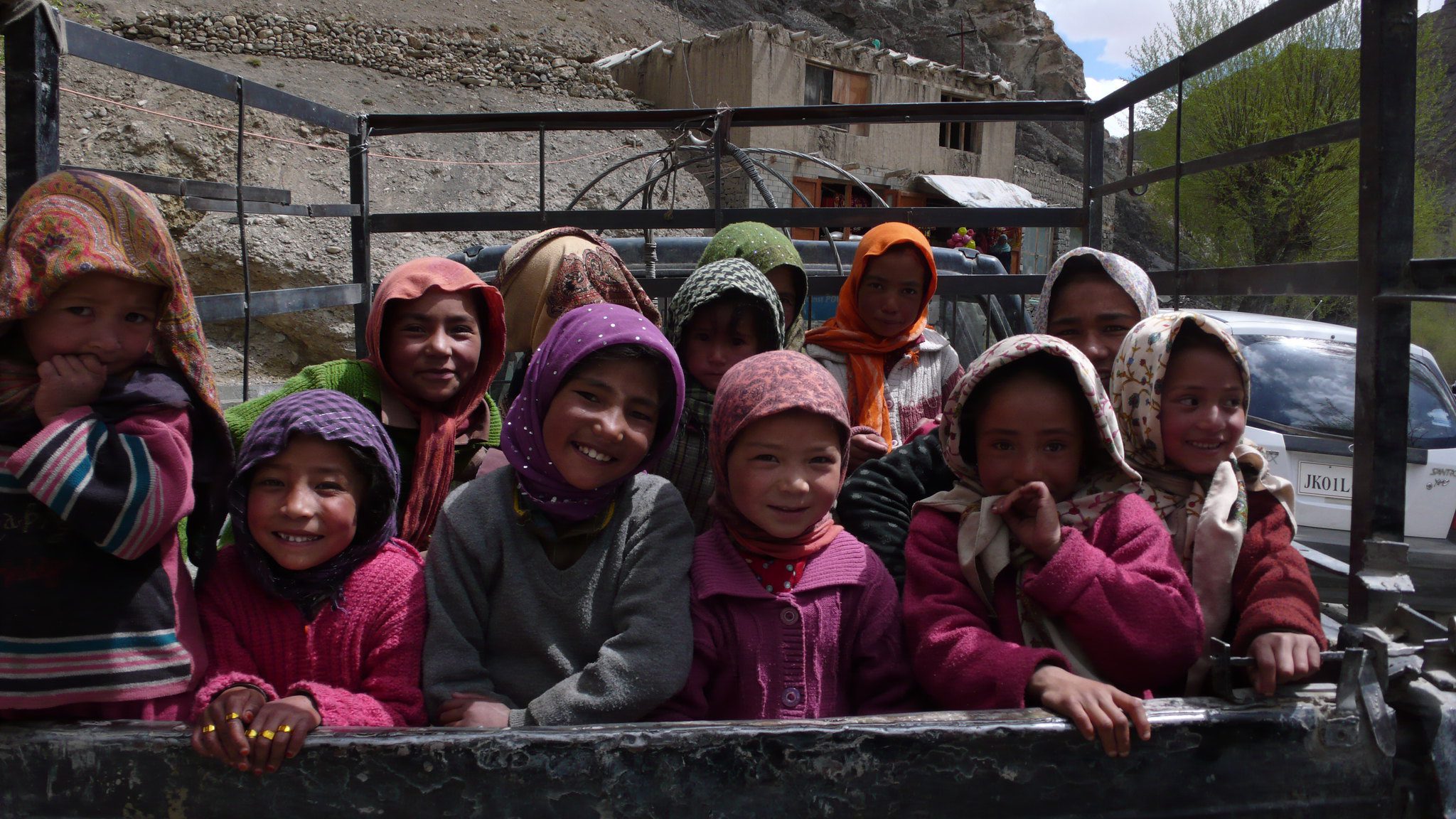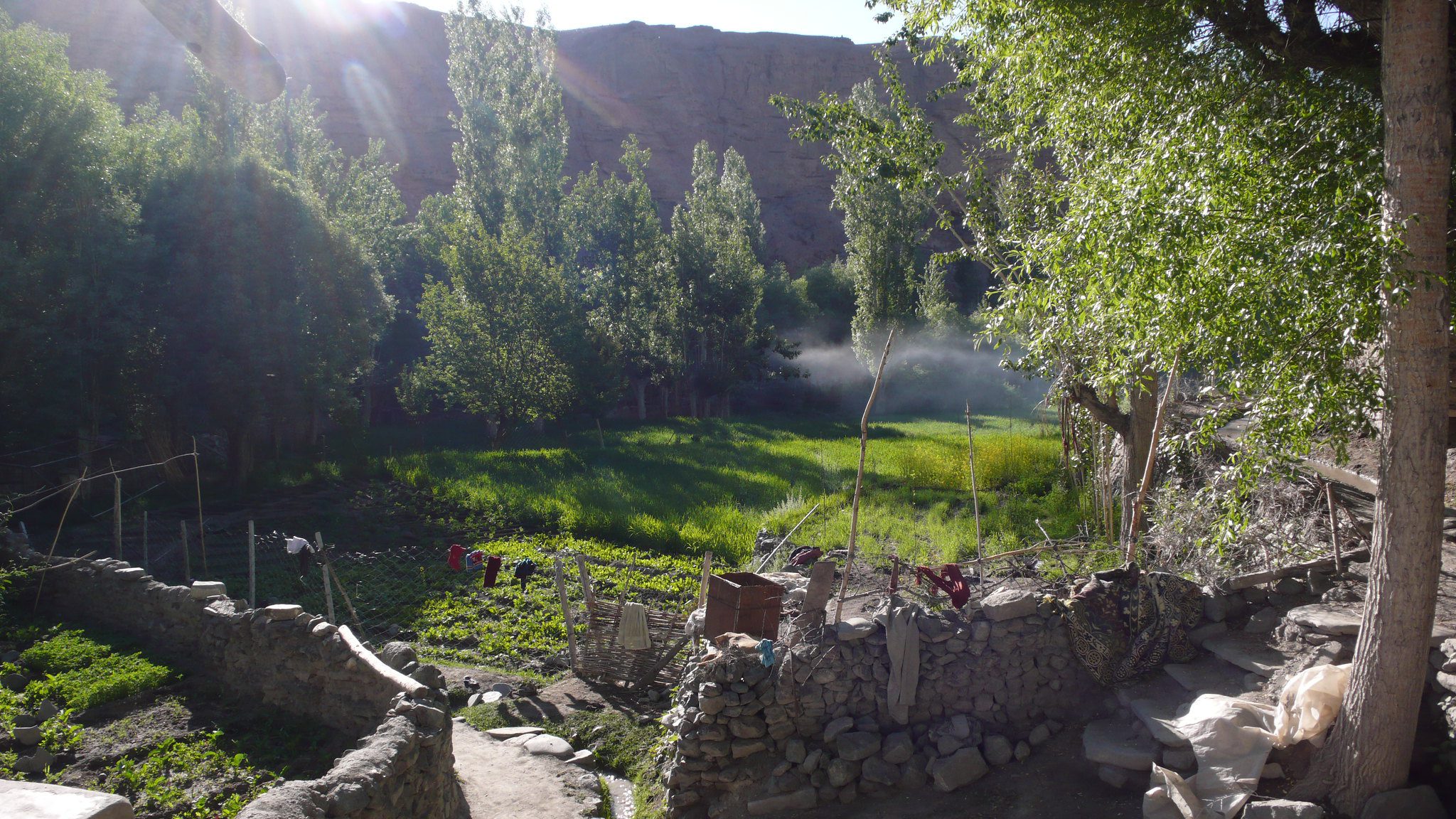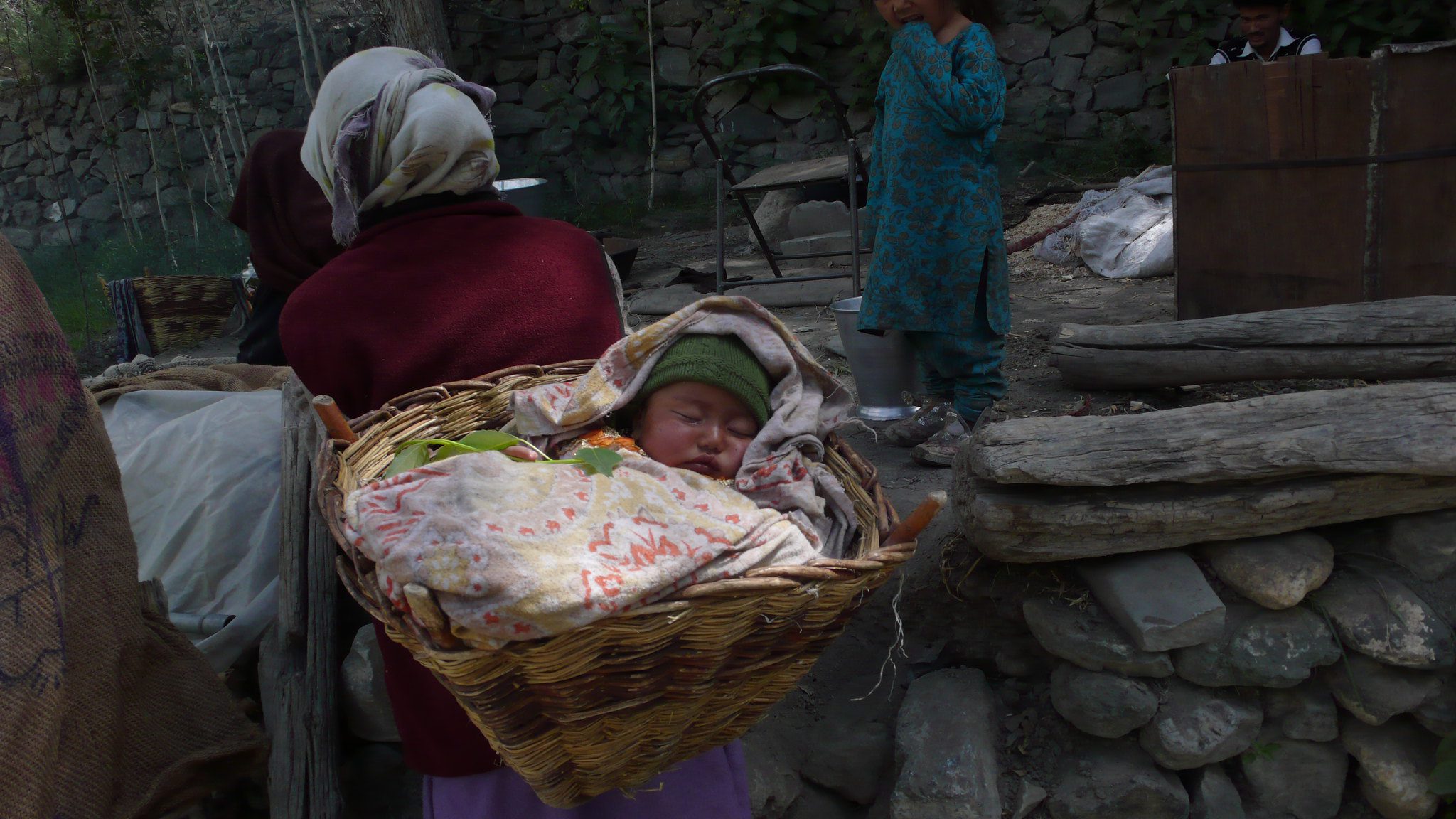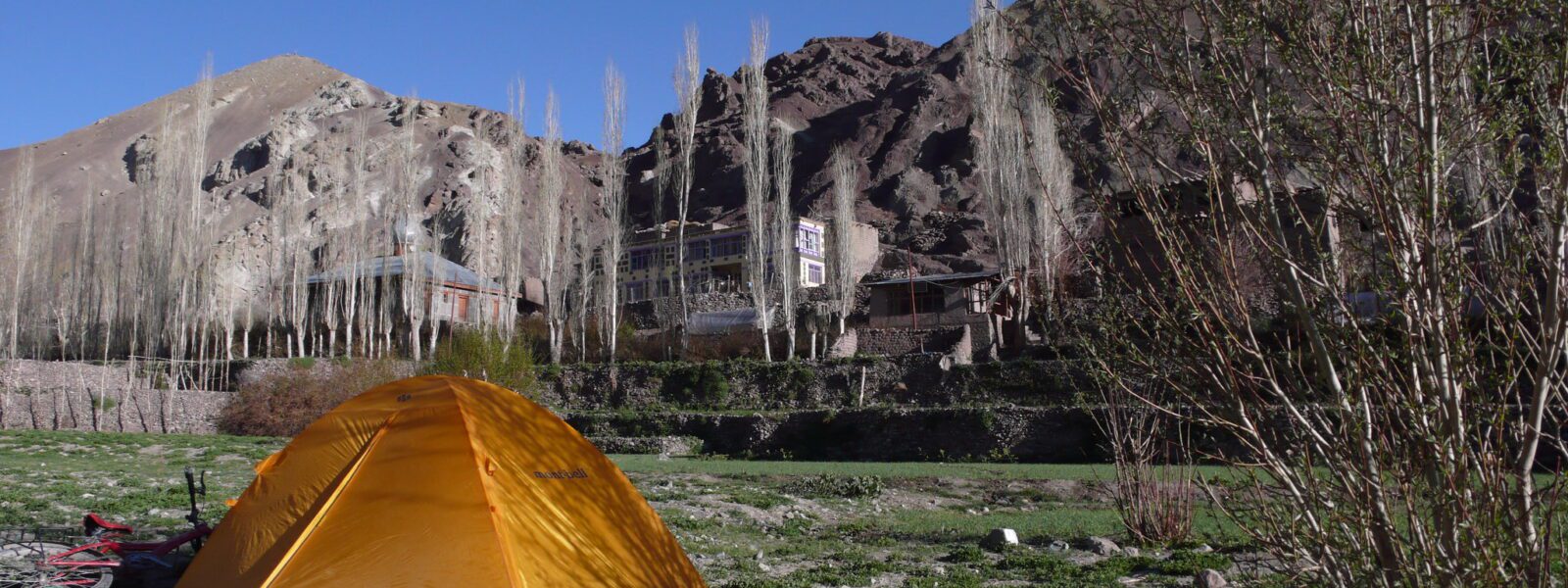Chiktan, a hidden gem nestled in the heart of Ladakh, offers some of the most breathtaking and unexplored trekking trails in the Indian Himalayas. This remote destination has captured the hearts of adventure seekers, nature lovers, and cultural explorers alike. With its untouched landscapes, panoramic views, and immersive cultural experiences, Chiktan truly is a trekker’s paradise waiting to be discovered.
Introduction to Chiktan – A Hidden Gem in Ladakh
Where is Chiktan?
Located in the Kargil district of Ladakh, Chiktan is a quiet, remote village that sits away from the bustling tourist hubs of Leh and Nubra Valley. Unlike popular trekking destinations, the Chiktan Valley remains largely unexplored, offering a peaceful retreat for those who seek solitude and connection with nature.
The region is surrounded by rugged mountains, meandering rivers, and isolated trails, making it an ideal spot for trekkers wanting to venture off the beaten path. Chiktan is not just a place; it’s an experience that allows you to embrace the untouched beauty of Ladakh.

Why Chiktan is a Trekker’s Paradise
Chiktan is not just another trekking destination—it’s a journey into the soul of Ladakh’s natural beauty. Trekkers in Chiktan get the opportunity to traverse paths that have remained hidden from mainstream tourism. The combination of high-altitude treks, rich culture, and scenic landscapes makes Chiktan the perfect destination for all levels of trekkers.
Many who have trekked in the region speak of the serenity they’ve found amidst the untouched wilderness. Here’s what some trekkers have shared:
“Chiktan is an undiscovered gem! Trekking through the remote trails gave me a sense of peace I’ve never experienced before.” – James Miller, Adventure Blogger, USA
“The cultural immersion along the trails was eye-opening. Walking through villages untouched by tourism was an unforgettable experience.” – Maria González, Travel Enthusiast, Spain
Top Hidden Trails in Chiktan
The Unexplored Trails of Chiktan Valley
One of the main draws of Chiktan is its unexplored trekking routes. These hidden trails offer a sense of adventure that is hard to find in more frequented destinations. Treks through Chiktan Valley take you through majestic landscapes filled with towering mountains, pristine rivers, and dense forests.
These trails are perfect for those who want to experience the raw beauty of Ladakh while avoiding the tourist crowds. The trails remain largely undisturbed, offering trekkers the chance to connect with nature in its purest form.

Offbeat Trails for the Adventurous Trekkers
For seasoned trekkers looking for a challenge, Chiktan offers a range of offbeat trails that take you deep into the heart of the Himalayas. These routes often involve steep ascents and high-altitude trekking, making them perfect for those who crave a sense of adventure.
One such route is the Chiktan to Hunder trek, which passes through remote valleys and untouched landscapes. This trek is known for its rugged terrain and the thrill of navigating through mountain passes.
Scenic Beauty of Chiktan Trails
Trekking Through the Pristine Wilderness
Chiktan’s trails offer unparalleled access to the region’s pristine wilderness. With untouched landscapes stretching as far as the eye can see, trekkers can immerse themselves in nature’s unspoiled beauty. Walking through dense forests and open valleys, you’ll encounter towering peaks, rushing streams, and wildlife unique to the region.
“Trekking through the wilderness of Chiktan felt like stepping back in time. The untouched scenery was absolutely breathtaking.” – Aditi Singh, Travel Photographer, India
Panoramic Views of the Chiktan Valley
Trekkers in Chiktan are rewarded with stunning panoramic views of the valley. From the top of its peaks, you can see snow-capped mountains and vast landscapes that stretch for miles. The peacefulness of these views, combined with the thrill of reaching high-altitude points, makes every step worth the effort.

Cultural Immersion Along Chiktan Trails
Exploring Remote Villages of Chiktan
Trekking through Chiktan isn’t just about nature—it’s also about cultural discovery. Along the trails, you’ll pass through remote villages where the local Ladakhi culture thrives. These villages are home to friendly locals who live simple, traditional lives that have remained unchanged for generations.
Trekkers often have the opportunity to stop and interact with villagers, offering a glimpse into the local life and traditions of this region.
“The people of Chiktan are some of the kindest I’ve ever met. Their hospitality made my trek even more special.” – Yuki Tanaka, Teacher, Japan
Discovering Local Life and Traditions
As you walk through these villages, you’ll get a chance to experience Ladakhi culture firsthand. From traditional Ladakhi homes to age-old monasteries, Chiktan offers a rich cultural experience that few trekking destinations can match. The unique blend of natural beauty and cultural immersion makes trekking in Chiktan an enriching experience.

Wildlife and Flora on Chiktan Trails
Rare Wildlife Sightings on Chiktan Treks
Chiktan’s remote location also means it’s home to a variety of rare wildlife. Trekkers often encounter blue sheep, Himalayan marmots, and even the elusive snow leopard. The region’s untouched nature provides a safe haven for these animals, making it a perfect destination for wildlife enthusiasts.
“Seeing a snow leopard from a distance was a highlight of my trek. Chiktan’s wildlife is just as fascinating as its landscapes.” – David McCormick, Wildlife Enthusiast, UK
The Flora of Chiktan Valley
In addition to its wildlife, Chiktan is known for its unique flora. The valley is home to a range of plant species that thrive in the high-altitude environment, including alpine flowers and medicinal herbs. Trekkers will often pass through meadows filled with vibrant blooms, particularly in the spring and summer months.
Best Time to Visit Chiktan for Trekking
Ideal Seasons for Exploring Chiktan’s Hidden Trails
The best time to explore Chiktan’s hidden trails is during the spring (April to June) and autumn (September to November). During these months, the weather is mild, and the trails are at their most beautiful, with clear skies and blooming flora.
Trekking in the summer offers warmer temperatures and lush greenery, while autumn provides cooler weather and stunning views of snow-capped peaks.
Trekking Preparation and Safety Tips
Essential Gear for Chiktan Treks
Given Chiktan’s remote location and high altitude, proper preparation is key to a successful trek. Trekkers should pack essential gear such as:
- Sturdy trekking boots
- Layers of warm clothing
- A reliable backpack
- Trekking poles
- A first-aid kit
- High-calorie snacks
Navigating the Trails: Maps and Guides
Since many of the trails in Chiktan are offbeat and unexplored, it’s recommended to either carry detailed maps or hire a local guide. Local guides not only help with navigation but also provide valuable insights into the history and culture of the area.

Final Thoughts on Trekking in Chiktan
Chiktan offers an unparalleled trekking experience for those looking to escape the crowds and explore hidden trails in the Himalayas. With its combination of natural beauty, cultural immersion, and adventure, Chiktan is truly a trekker’s paradise. Whether you’re a seasoned trekker or a beginner, the valley’s diverse trails offer something for everyone.
“Trekking in Chiktan was one of the most memorable experiences of my life. I can’t wait to go back and explore even more trails.” – Lisa Muller, Travel Blogger, Germany
FAQs About Trekking in Chiktan
Is Chiktan suitable for beginner trekkers?
Yes, Chiktan offers several beginner-friendly treks, with moderate difficulty levels and scenic routes that are easy to navigate.
What is the best time of year to trek in Chiktan?
The ideal time for trekking in Chiktan is from April to June and September to November, when the weather is mild, and the trails are at their most picturesque.
How do I reach Chiktan for trekking?
Chiktan is accessible via Leh, the main city in Ladakh. From Leh, you can hire a taxi or take a local bus to Chiktan.
What are the accommodation options in Chiktan?
Chiktan offers basic accommodations such as guesthouses and homestays in the villages along the trekking routes. For a more immersive experience, stay with local families.
What should I pack for a Chiktan trek?
Ensure you pack essentials such as warm clothing, trekking boots, snacks, and a first-aid kit. Given the remoteness, pack light but ensure you have all necessary equipment.
Are there guides available for Chiktan treks?
Yes, local trekking guides are available in Chiktan. Hiring a guide is recommended, especially for first-time visitors.
Trails of Chiktan
Trails of Chiktan | The journey through Ladakh mirrors the very essence of unraveling unknown horizons, as its dramatic landscapes and unique cultural identity awaken the deepest sense of wonder and exploration. Trails of Chiktan delves into this realm where inner peace intertwines with the wild, untouched beauty of Ladakh. From the snow-capped peaks to the serene monasteries, every step in Ladakh is a step toward self-discovery. The mountains, ancient paths, and unspoken mysteries stretch before travelers, offering a meditative experience where each encounter feels both effortless and transformative. Whether it’s trekking across remote valleys or sitting quietly beside a sacred lake, Ladakh invites those who seek a deeper connection to the natural and spiritual world.

Trails of Chiktan
The monasteries of Ladakh stand as living monuments to the region’s profound spiritual heritage. With origins dating back over a thousand years, these ancient structures are both places of worship and repositories of art, culture, and wisdom. Hemis Monastery, one of the largest in Ladakh, is renowned for its annual festival, featuring colorful mask dances performed by monks. The history of these monasteries reflects Ladakh’s role as a crossroads between India, Tibet, and Central Asia, where religious and cultural influences have intertwined over the centuries.
The Tibetan Buddhist influence is especially evident in the architecture and daily life of the monks. Prayer wheels, intricate murals, and the soft hum of chants fill the air as visitors explore the monastery grounds. Each monastery, from the remote Lamayuru to the awe-inspiring Thiksey, offers a window into the spiritual heart of Ladakh. These centers of meditation, learning, and community life continue to thrive, preserving traditions that have shaped Ladakh for generations.
Why Visit Ladakh for Trails of Chiktan?
Ladakh is a destination that transcends mere travel. It offers a journey that touches both the outer and inner landscapes, making it a perfect setting for those who seek to unravel their own unknown horizons. The region’s breathtaking scenery—from towering mountain ranges to hidden valleys—provides not just an escape but a space for contemplation and growth. Ladakh’s culture, deeply rooted in Buddhist practices, invites visitors to reflect on their own lives and the world around them.
Ladakh’s people, known for their warmth and hospitality, add to the richness of the experience. Villages like Sumda Chun and the legendary Nubra Valley introduce travelers to a way of life that is intricately connected to nature and spirituality. Staying in local homestays allows for immersive experiences where one can learn about traditional Ladakhi customs, share meals made from local produce, and participate in community rituals.

Beyond its natural beauty, Ladakh offers a unique opportunity to explore oneself. The vastness of the region’s plateaus and the clarity of its skies seem to mirror the vastness of the human spirit. Whether it’s standing atop a mountain pass at 18,000 feet or meditating in a centuries-old monastery, Ladakh helps unravel the unknown horizons within each traveler.
Finding the Best Trails of Chiktan in Ladakh
Finding the best places in Ladakh to experience “Trails of Chiktan” involves venturing off the beaten path. Ladakh’s lesser-known treks, such as those leading to secluded monasteries or high-altitude lakes, offer unparalleled opportunities for solitude and reflection. The Markha Valley trek, for instance, takes travelers through verdant valleys, ancient villages, and high-altitude passes, allowing for both physical and spiritual exploration.
Ladakh’s iconic lakes, including Pangong Tso and Tso Moriri, are ideal spots for quiet contemplation. Their still waters reflect the sky, creating a mesmerizing landscape that feels timeless and infinite. Sitting beside these lakes, especially at dawn or dusk, brings an overwhelming sense of peace and connection with nature.

For those interested in Ladakh’s spiritual heritage, exploring monasteries such as Alchi, Phyang, or Diskit can be a transformative experience. These sites are not just places of worship but also centers of art, philosophy, and wisdom. Visiting these monasteries, with their ancient murals and intricate statues, offers insight into Ladakh’s rich cultural tapestry.
Ladakh’s Atmosphere and Trails of Chiktan
Ladakh’s atmosphere is unlike any other place on Earth. The stark contrasts between the rugged mountains and the serene, tranquil monasteries create an environment that feels both raw and sacred. The traditional decor in Ladakhi homes and religious sites reflects this balance, with mud-brick houses adorned with prayer flags and colorful thangkas (Buddhist paintings) that add warmth and spiritual meaning to the space.

The interiors of Ladakhi homes, often simple and functional, are filled with symbols of devotion. Small shrines dedicated to Buddhist deities are common, and the air is often fragrant with incense. The use of earthy materials, like stone and wood, along with brightly colored textiles, creates an inviting and peaceful space, perfect for relaxation and reflection.
Traditional Ladakhi Cuisine
Traditional Ladakhi cuisine is an integral part of the region’s identity, offering a unique blend of flavors that reflect its harsh climate and remote location. Hearty, warming dishes such as thukpa (noodle soup) and momos (dumplings) provide the sustenance needed to endure Ladakh’s cold temperatures. Skyu, a thick stew made with root vegetables and barley, is another staple of the Ladakhi diet, designed to nourish both body and spirit.

Drinks like butter tea, made with yak butter and salt, are a must-try for anyone visiting Ladakh. This rich, savory drink is not only warming but also hydrating, making it essential for those venturing into the high-altitude regions of Ladakh. Chang, a local barley beer, is often enjoyed during festivals and community gatherings, adding a sense of joy and camaraderie to any occasion.
Live Cultural Trails of Chiktan in Ladakh
Ladakh is home to a vibrant cultural scene, with festivals and live performances held throughout the year. The Hemis Festival, which celebrates the birth of Guru Padmasambhava, is one of the largest and most famous events in the region. Monks dressed in elaborate costumes perform cham dances, which depict the triumph of good over evil. The energy of the festival, with its bright colors, rhythmic music, and elaborate rituals, draws visitors from around the world.
Other local festivals, such as the Losar (New Year) and Ladakh Festival, provide visitors with the chance to witness traditional dance, music, and crafts that have been passed down through generations. These events are more than just entertainment; they are a celebration of Ladakh’s rich cultural heritage and its deep connection to the spiritual world.
Trekking and Outdoor Activities Trails of Chiktan
Ladakh is a trekker’s paradise, offering some of the most stunning and challenging routes in the world. From the famous Trails of Chiktan, which follows the frozen Zanskar River, to lesser-known routes like the Sham Valley or Nubra Valley treks, Ladakh’s landscape offers endless possibilities for adventure and discovery. The high-altitude passes, such as Khardung La and Chang La, offer breathtaking views of snow-capped peaks and sprawling valleys.

Wildlife enthusiasts will also find Trails of Chiktan to be a haven for rare species such as the snow leopard, Himalayan blue sheep, and the Tibetan wild ass. Winter expeditions to spot the elusive snow leopard in the Hemis National Park are gaining popularity among wildlife photographers and conservationists alike.
The Importance of Preserving Ladakh’s Trails of Chiktan
Ladakh’s rich cultural and environmental Trails of Chiktan is under increasing threat from climate change and mass tourism. Preserving this unique region requires careful attention to sustainable tourism practices. Choosing eco-friendly accommodations, supporting local businesses, and participating in community-led conservation efforts are just a few ways that visitors can contribute to the preservation of Ladakh’s natural and cultural heritage.
Ladakh’s people have a long history of living in harmony with their environment, practicing sustainable agriculture, and maintaining a deep spiritual connection to the land. Visitors are encouraged to follow the same principles, leaving no trace and respecting the fragile ecosystems that make Ladakh so special.
Etiquette and Tips for Visiting Trails of Chiktan
Before visiting Ladakh, it’s essential to understand and respect the region’s customs and traditions. As a deeply spiritual place, Ladakh requires visitors to dress modestly, especially when visiting monasteries or attending religious ceremonies. Always ask for permission before taking photographs inside monasteries or of local people.
Medical Trails of Chiktan
Spa trail Trails of Chiktan
Trails of Chiktan

When Trails of Chiktan, remember to stay on designated paths to avoid damaging fragile ecosystems. Tipping is appreciated but not expected in most settings, and it’s important to carry cash, as many remote areas do not accept credit cards. Lastly, be mindful of altitude sickness and take the necessary precautions when traveling to higher elevations.
Conclusion: Enjoying Trails of Chiktan in Ladakh
Ladakh is a place where the physical and spiritual worlds converge, offering travelers a journey unlike any other. Whether you’re trekking across high-altitude deserts, exploring ancient monasteries, or simply sitting in quiet reflection by a mountain lake, Ladakh invites you to unravel your own unknown horizons. By respecting the region’s traditions and practicing sustainable tourism, you help ensure that Ladakh’s beauty and cultural richness will be preserved for future generations to explore and enjoy.













